15 Low-Maintenance Perennials for Busy Gardeners
Once these hardy varieties are established, you can sit back and enjoy the show year after year.
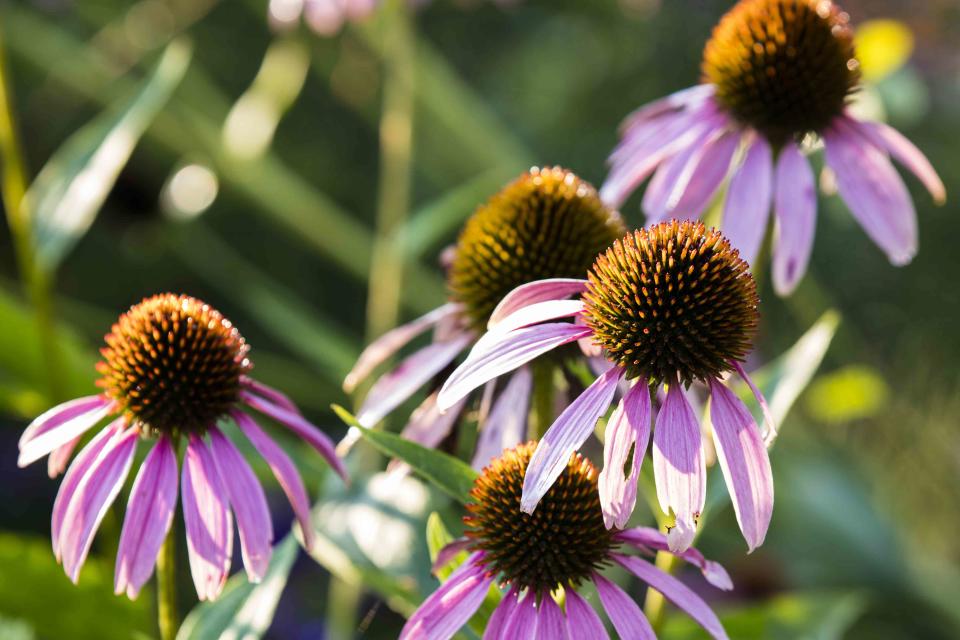
Claire Takacs
Whether you have a seasoned green thumb or you're just getting started, it's important to leverage the power of perennial plants. Since they come back year after year, perennials are dependable, low-maintenance additions to your landscape. But not every variety's care levels are the same. Some perennials—like the ones on this list—require less attention than others, while still offering maximum visual impact. Ahead, we're sharing easy-to-care for perennial plants that will thrive in a multitude of climates, sun exposures, and soil conditions. Simply plant, sit back, and enjoy the color-filled show.
Meet Our Expert
Ray Larson, the curator of living collections and the associate director of the University of Washington Botanic Gardens in Seattle
Dan Stuppiello, Home Depot's divisional merchandise manager of live goods
Robin Phelps, gardening and preserving coach for Sow Many Plants
Related: 14 Perennial Plants With Long-Lasting Flowers
Frikart's Aster
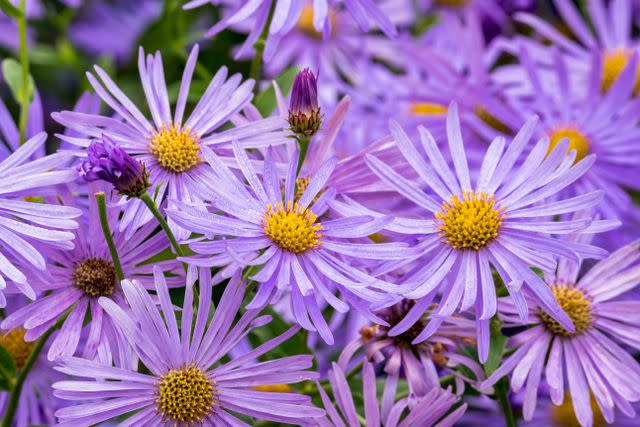
TonyBaggett / GETTY IMAGES
A perennial plant, this aster type is easy to care for, disease resistant, and has a long bloom time; its light purple blooms flower nonstop from July to the first frost. "It appreciates water during droughty periods," says Ray Larson, the curator of living collections and the associate director of the University of Washington Botanic Gardens in Seattle. "Also, there is no staking required."
Zones: 5 to 8
Size: 3 feet tall x 18 inches wide
Care requirements: full sun (at least six hours a day); well-drained soil
Lemongrass
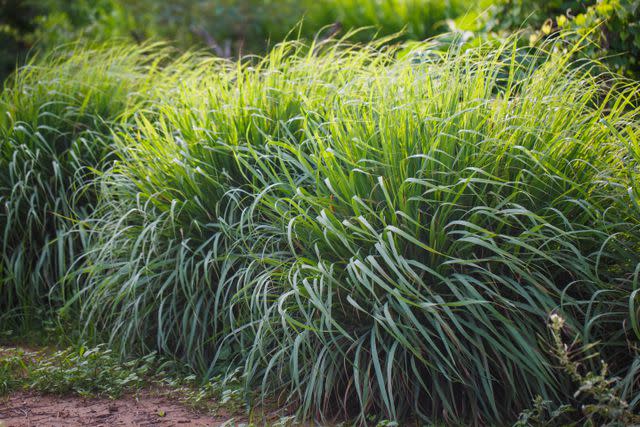
Getty Images
Lemongrass (Cymbopogon citratus) is a low-maintenance perennial plant that offers curb appeal outdoors and flavor inside; you can snip its leaves to use for tea and cooking. Plant lemongrass in spring, after the risk of frost has passed, says Dan Stuppiello, Home Depot's divisional merchandise manager of live goods.
Zones: 9 to 11
Size: 3 feet tall x 4 feet wide
Care requirements: full sun; water when soil is dry
Blue Wild Indigo
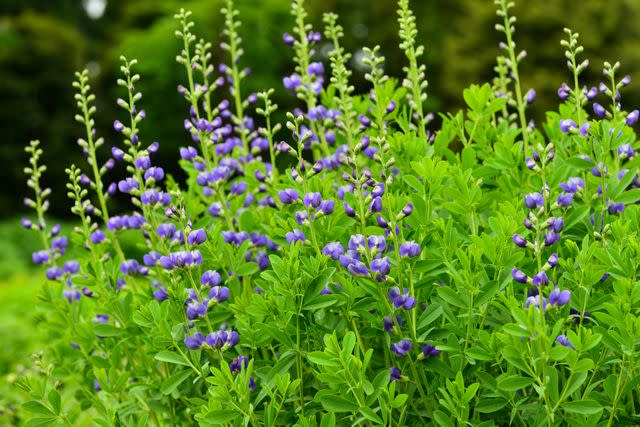
emer1940 / GETTY IMAGES
Blue wild indigo (Baptisia australis) is a large, deciduous perennial that features blue-green foliage and spikes of purplish, pea-like flowers in early summer. "Seedpods persist after flowering and are attractively purple-black until fall," says Larson. "This is a drought-tolerant species that grows well in most of the United States. It is slow growing in youth and resents being moved, but otherwise is nearly care-free."
Zones: 3 through 10
Size: 4 feet tall x 3 feet wide
Care requirements: full sun; well-drained soils (thrives in multiple types)
Geranium x Cantabrigense
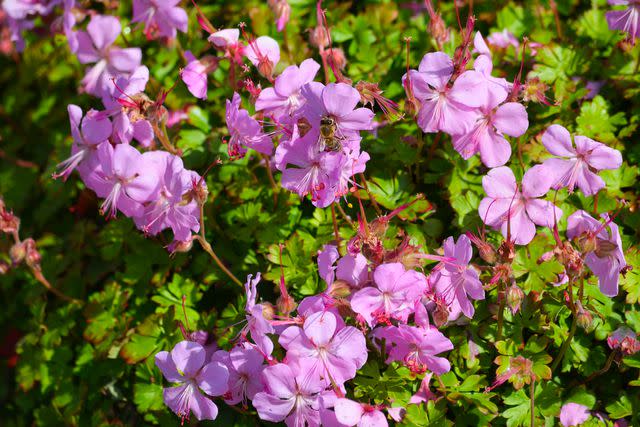
Cristina Ionescu / GETTY IMAGES
While maybe not the showiest hardy geranium, this variety is by far the easiest to grow in difficult spots. "It is a sterile hybrid of two tough parents with aromatic foliage and long-lasting flowers in shades of white to pink—or shades of red or purple, depending on cultivar," says Larson. "The first bloom is in late spring to early summer with sporadic re-bloom throughout the summer. It is drought tolerant when established."
Zones: 5 to 8
Size: 8 to 12 inches wide (compact carpet)
Care requirements: moist, well-drained soils
Sweetheart Epimedium
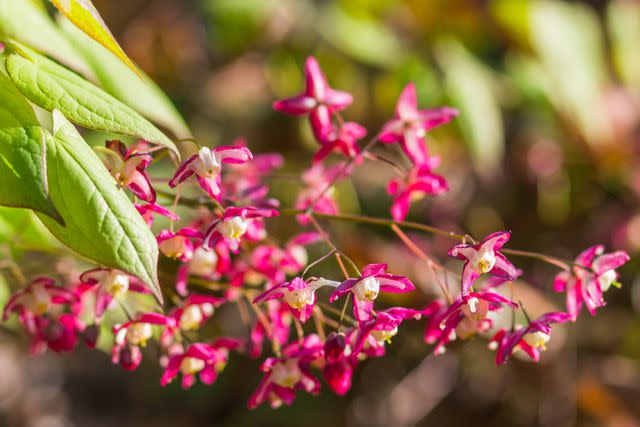
ULADZIMIR ZGURSKI / GETTY IMAGES
If you're looking for a low-maintenance epimedium variety for droughty conditions, the sweetheart epimedium is the perennial plant for you. This semi-evergreen variety features attractive flowers and foliage and large, heart-shaped leaves that emerge edged in a maroon band and then fade to full green in summer. "The medium-sized flowers have dark rose sepals and white, short-spurred petals. Unlike many cultivars, this can handle drought once established," says Larson.
Zones: 5 to 9
Size: 18 inches tall x 3 feet wide (slowly spreads by rhizomes)
Care requirements: tolerates a wide variety of soil conditions
Purple Wood Sage
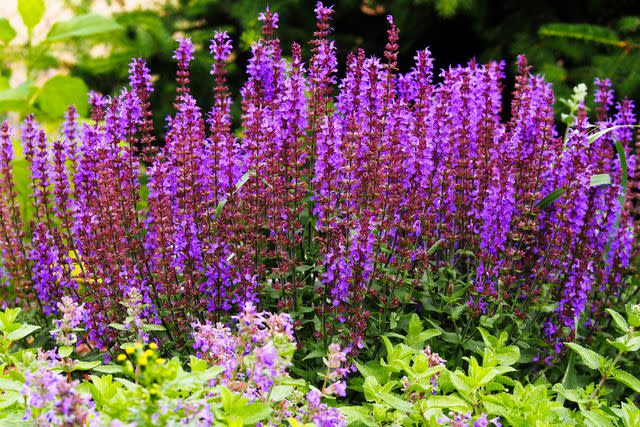
Gratysanna / GETTY IMAGES
Purple wood sage (Salvia nemorosa) puts on a prolonged show. Its dark purple spikes covered in violet flowers produce in abundance in late spring and early summer. "This is one of the best and easiest sages for the garden," says Larson. If you are willing to put in a little work, deadheading your purple wood sage and applying some supplemental water during drought periods will encourage another round of blooms at the end of the summer. "Its best performance occurs with summer water during extended dry periods," says Larson.
Zones: 4 to 9
Size: 2 feet tall x 2 feet wide
Care requirements: full sun; well-drained soil
Dwarf Plumbago
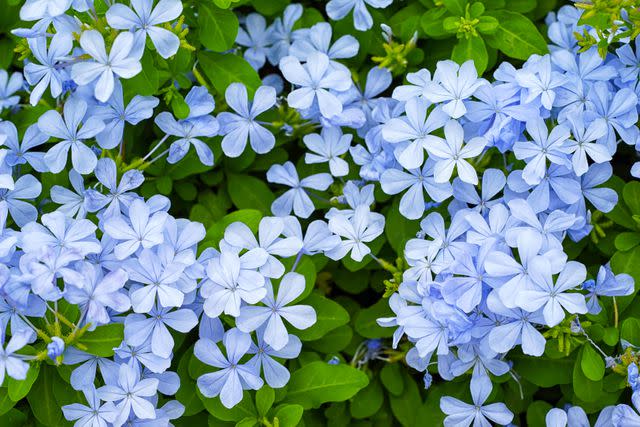
pixs4u / GETTY IMAGES
One of the best low-maintenance perennial plants for late-summer interest, the dwarf plumbago (Ceratostigma plumbaginoides) has sapphire-blue flowers that add an unusual color to your garden. "It grows to only 1 foot in height at maturity, which makes it good at weaving through other plants," says Larson. "The abundant small blue flowers take on extra intensity as its foliage turns from green to reds and oranges as fall approaches. Occasional summer water results in heavier bloom later in the season."
Zones: 6 to 9
Size: 1 foot tall x 2 feet wide
Growing conditions: full sun to light shade; well-drained soil
Black-Eyed Susan
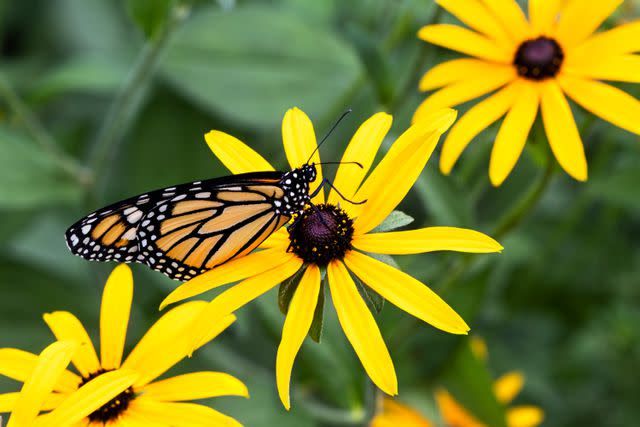
patty_c / GETTY IMAGES
Effortlessly radiant and endlessly charming, the black-eyed Susan (Rudbeckia hirta) features golden petals and striking dark centers, adding a burst of sunshine to any landscape. "Black-eyed Susan flowers are prolific bloomers and can create a stunning display of color in the garden, typically from mid-summer to early fall," says Robin Phelps, gardening and preserving coach for Sow Many Plants. "What truly sets this perennial plant apart is its remarkable ability to thrive with minimal care: They are resilient, adaptable, and require little fuss to flourish."
Zones: 3 to 9
Size: 2 to 3 feet tall x 2 to 3 feet wide
Care requirements: full sun to partial shade (drought tolerant); rich, well-drained soil
Russian Sage
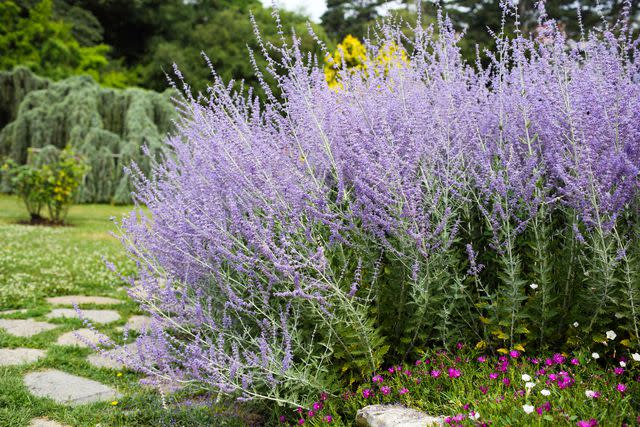
loflo69 / GETTY IMAGES
Russian sage (Perovskia atriplicifolia) is a resilient plant that requires minimal care while delivering maximum impact. "One of the standout features of Russian sage is its profusion of small, tubular flowers that form dense spikes or panicles," says Phelps. "The flower spikes rise above the foliage, creating an impressive and airy display. The blooming period generally occurs in mid- to late-summer and can last well into fall, attracting pollinators like bees and butterflies."
Zones: 4 to 9
Size: 3 to 4 feet tall x 3 to 4 feet wide
Care requirements: full sun to partial shade (drought-tolerant after first year); well-drained soil with good air circulation
Coneflower
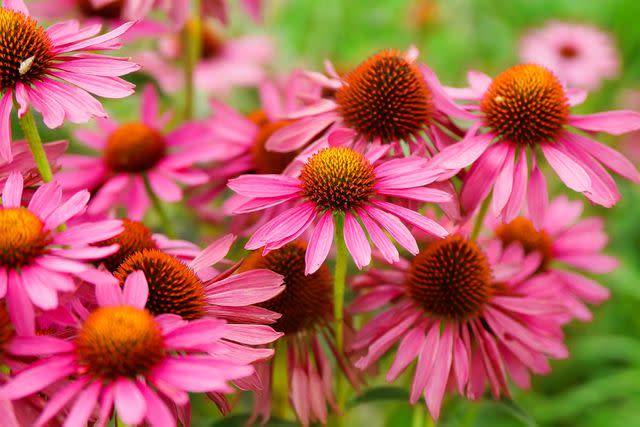
titi-kako / GETTY IMAGES
Requiring little fuss, coneflowers (Echinacea) are a busy gardener's dream. This perennial plant's most prominent feature is the large, showy composite flowers. Each flower consists of a raised cone-shaped center which is surrounded by colorful ray florets. "The ray florets radiate outward from the cone and can be various shades of pink, purple, white, or even yellow, depending on the cultivar," says Phelps.
Zones: 3 to 9
Size: 2 to 4 feet tall x 1 to 2 feet wide
Care requirements: full sun (drought-tolerant once established); well-drained soil
Daylily
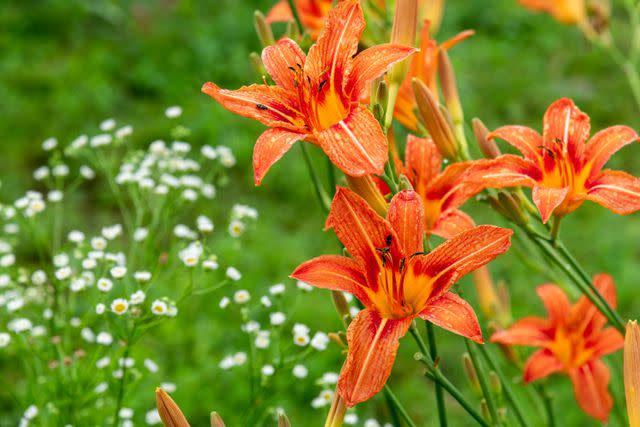
OlgaVolodina / GETTY IMAGES
One of the remarkable qualities of daylilies (Hemerocallis fulva) is their ability to withstand different light conditions. "They perform best in full sun to partial shade, allowing you flexibility in their placement within your garden," says Phelps. "The star attraction of daylilies is their flowers: each flower typically lasts for a single day, hence the name daylily."
Zones: 3 to 9
Size: 1 to 4 feet tall x 1 to 4 feet wide (varies by cultivar)
Care requirements: full sun to partial shade (water regularly); rich, well-drained soil
Yarrow
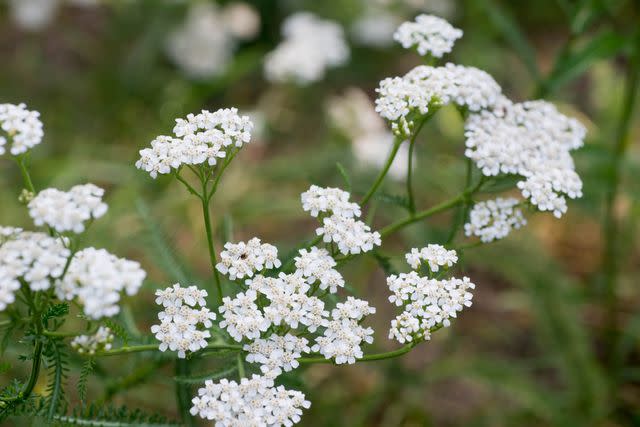
aga7ta / Getty Images
There are many species of yarrow (Achillea) to choose from and all of them are known for being low-maintenance and drought-tolerant. This perennial has fern-like foliage and cheerful flowers that will brighten your garden. Yarrow is a quick grower, so one thing you will need to do every few years is divide it.
Zones: 3 to 9
Size: 2 to 3 feet tall x 2 to 3 feet wide
Care requirements: full sun to partial shade; sandy, acidic well-drained soil
Hosta
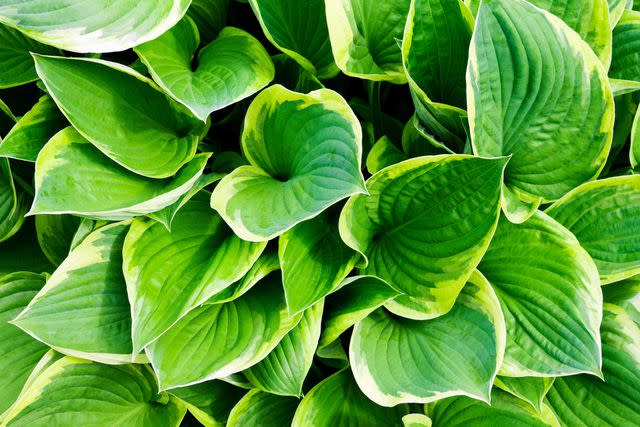
Julia Kuznetsova / Getty Images
Often grown for their striking foliage, hostas look especially beautiful when planted in perennial beds, rock gardens, or shade gardens. The small- to medium-sized varieties look great when grown as ground covers. This low-maintenance perennial prefers well-draining soil and won't survive in soggy conditions.
Zones: 3 to 9
Size: 4 inches to 2 feet tall x 6 inches to 3 feet wide
Care requirements: full to partial shade; well-drained soil
Lavender
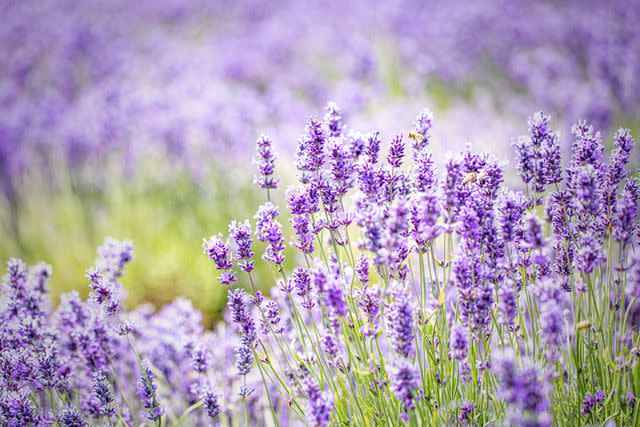
Pez Photography / Getty Images
This Mediterranean plant (Lavandula) is native to Europe and is naturally drought-tolerant. Use lavender as a filler plant in a rock garden, pollinator garden, edible garden or in containers—its purple, upright leaves offer a pop of color and texture.
Zones: 5 to 9
Size: 1 to 3 feet tall x 1 to 2 feet wide
Care requirements: full sun to partial shade; well-drained soil
Peony
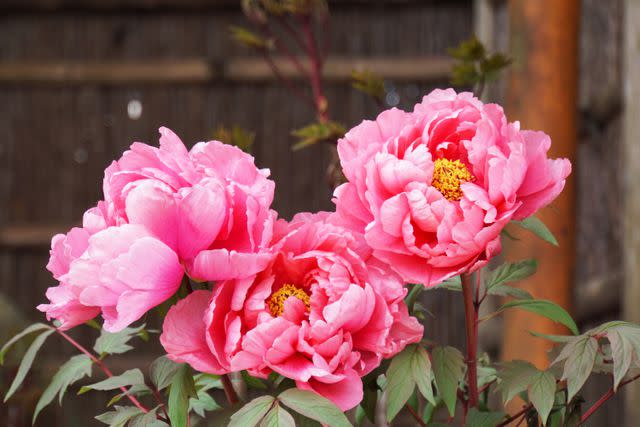
Grown for their showy, flouncy blossoms, peonies (Paeonia) are low-maintenance once established. While it may take a few years for this herbaceous perennial to produce its beloved flowers, peonies can live for decades in optimal growing conditions.
Zones: 3 to 8
Size: 1 to 3 feet tall x 1 to 3 feet wide
Care requirements: full sun to partial shade; acidic, organic-rich, well-drained soil
Read the original article on Martha Stewart.

